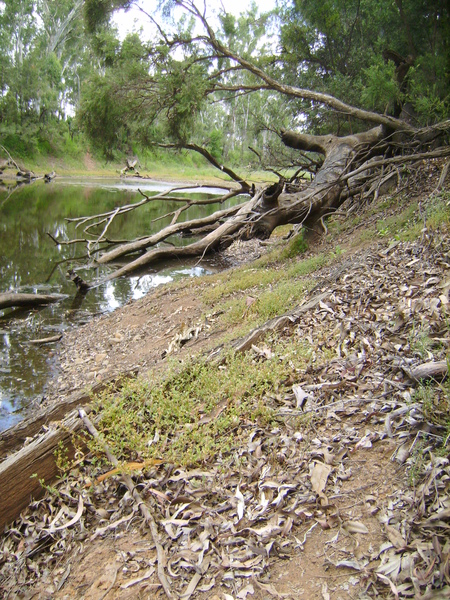Ecosystem Health Index Report
Callide
Indicators
Phys-Chem
Nutrients
Toxicants
Ecology
Trends
Decline
Maintain
Improve
Confidence
Guidance on exploring graphs and data
Please find the guide below to help you in exploring the results.
Categories
Along the top of the graph there are four ecosystem health index categories:
- physical/chemical,
- nutrients,
- toxicants
- ecology.
"‘Toxicants’ is a term used for chemical contaminants that have the potential to exert toxic effects at concentrations that might be encountered in the environment" (ANZECC and ARMCANZ, 2000).
Each category has at least one and usually several indicators, located on the left side (y-axis) of the graph. Click on these indicators to find out more about each of them, including:
- what is measured
- why it is important to measure them
- what a particular grade means for this indicator?
Grades
We apply a series of calculations to the data to determine an award grade for each waterway health indicator. Hover over the grade to find out the exact score for each indicator. Compare the grade to the legend at the bottom of the graph (x-axis) to quickly see how each indicator went. Click on the legend for more details about these grades and what they mean.
Datasheet
Need more detail? Delve into the data by downloading the workbook!
For each reporting area, there is a workbook available for each waterway health category. Select the category you are interested in, then click the workbook icon from the data box just below the legend.
Once you open the file, the first sheet is the summary results for the category. It provides summary results for each indicator for three flow conditions: flow weighted; low and high.
At the category level, the score (0 to 100) and corresponding grade (E to A) is provided for each indicator. In addition, the number of sites and number of samples used to prepare the results are provided. Going one step further, you can explore the results for each indicator by selecting the sheet with the corresponding indicator name. In these sheets you will find the summary results for each site. Once again this includes a score (0 to 100) and grade (E to A) along with the number of samples that went into this grade. To give you an idea of the range of results we have also provide the minimum sample score and maximum sample score. Each site has a site ID, which keeps maintains the privacy of data providers while maintaining a reference to the data stored on the partnership database.
You can visit the grading explained section of the website to get a more detailed explanation of the scoring system used.
Overall, the ecosystem health index of monitored streams in the Callide catchment was found to be in fair condition this period with:
- Good or Fair results for physico-chemical indicators
- Mostly good results for nutrient indicators, except for Filterable Reactive Phosphorus.
- Mostly Excellent or Good results for toxicant indicators, except for Cadmium, Copper, Nickel and Zinc.
The assessment is based on 37 sites (99,968 samples) to determine the overall catchment grade.
Facts about the Callide
The Callide Catchment is located in the southeast of the Fitzroy Basin and includes the Dee River, the Don River and Callide Creek. Waterways in the Callide Catchment flow in a roughly northerly direction, eventually draining to the Dawson River, just downstream of Baralaba. The historic gold mining town of Mount Morgan is situated at the headwaters of the Dee River. Biloela is located in the centre of the catchment between Callide and Kariboe Creeks. A fertile floodplain extends from Biloela to the junction of the Dawson River with irrigation for cropping and town water supplies provided by several reservoirs, including the Callide Dam. A coal-fired power station and associated mine are located close by. Grazing is the predominant land use. Average annual rainfall is greater than 1000 mm on the eastern ranges, including Kroombit Tops, and then decreases to 600 mm in the west.

The Dee River near Dululu



 Download Data
Download Data